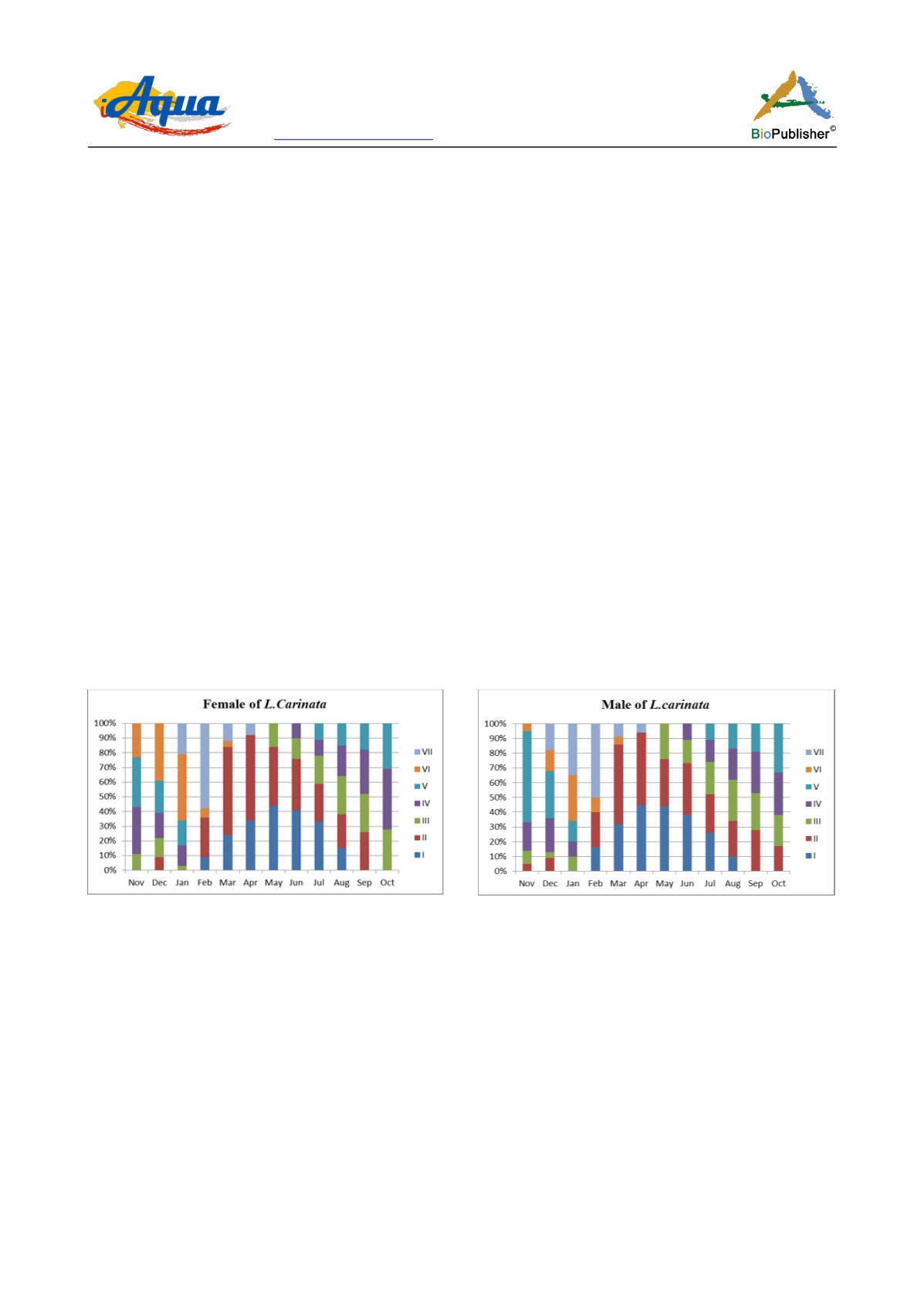
International Journal of Aquaculture, 2016, Vol.6, No.5, 1
-
14
7
3.5.2 Male maturity stage
Stage I (Immature):
The testes are narrow ribbon like and transparent in color; occupying 1/4 of the body cavity.
In this stage the two sexes difficult to differentiation.
Stage II (Immature& recovering):
The testes were slightly thickened and elongated occupy 1/3 of the body
cavity with developing white color can be detected.
Stage III (Developing):
The testes are white ribbon, like band. They are broader, thicker and softer than those of
the previous stages. The testes occupy 2/3 of the body cavity.
Stage IV (Maturing):
The testes are white or creamy, elongated and broad occupying 3/4 of the body cavity. No
milt exudates by pressure on gonad.
Stage V (Mature):
The testes are white or creamy in color, approximately are filling the body cavity. The milt
discharges by a gentle pressing on the abdomen.
Stage VI (Spawning):
The testes are slightly flaccid and milt comes out by pressing or cutting the gonad and has
a creamy color like the previous stage.
Stage VII (Spent):
The testes are grayish in color, thin and flaccid occupying about 1/2 of the body cavity. The
sperms keep inside the gonads without moving out however on pressing or cutting.
3.5.3 Monthly distribution of male maturity stages
Immature & recovery testis of male
L. carinata
present all the year except in January, while stage III & IV
(Developing & Maturing ) found with more dominance from August to October .Mature and spawning stages
occupied the spawning months than the previous stage, while spent testes started to appeared in the December
(18%) and given a sudden increase in February (50%) (Figure 8).
Figure 7 Monthly distribution maturity stages of female
L.
carinata
in Suez Bay
Figure 8 Monthly distribution of maturity stages of male
L.
carinata
in Suez Bay
In the present study, immature and recovering were found throughout the whole year. Similar results were
reported by (McDonough et al., 2003 and Assem et al., 2008) on
Mugil cephalus
. The maturity stages observed in
the present study have been recorded in many other species of mullet in the following table the number of
maturity stages will be mentioned for some species (Table 2).
The same morphological features were recorded by (Abou-Seedo and Stephen, 2004 and Hakimelahi et al. 2011) for
the same species.
3.6 Sex ratio
The fluctuation in the sex ratio for
L. carinata
in Suez bay expressed as a percentage of the individual sexes
among the samples was examined from November (2012) to October (2013). The data represented in (Figure 9).
In fish sex ratio varies considerably from species to species but in the majority of species it is close to 1:1 (as the
hypothetical value) in which the prediction birth number of females and males are the same (Vazzoler, 1996). It


